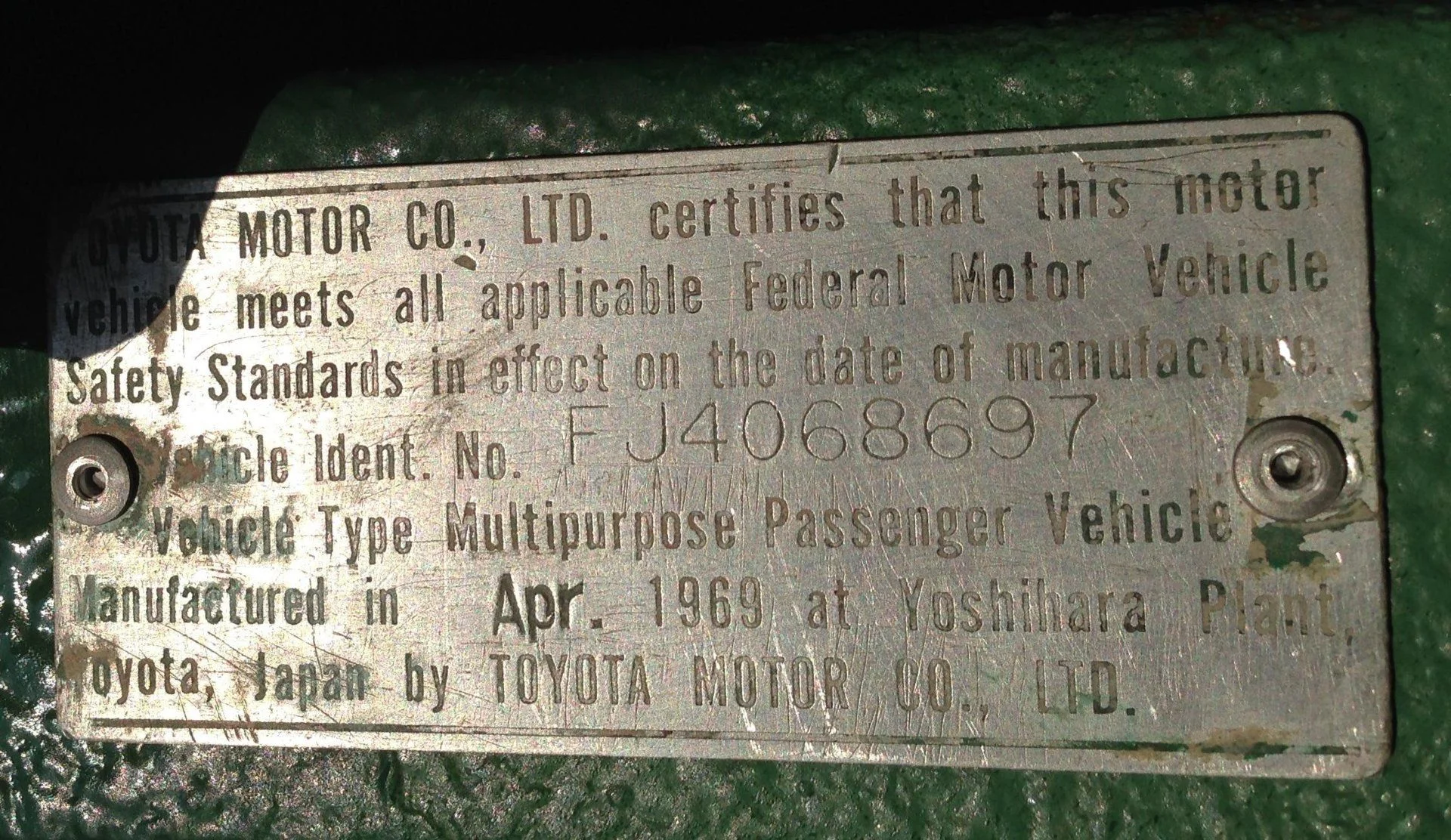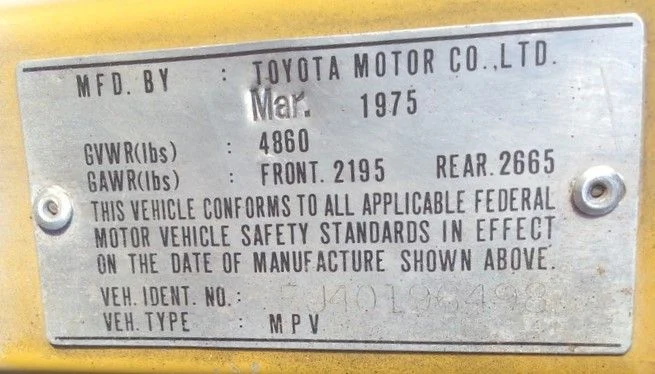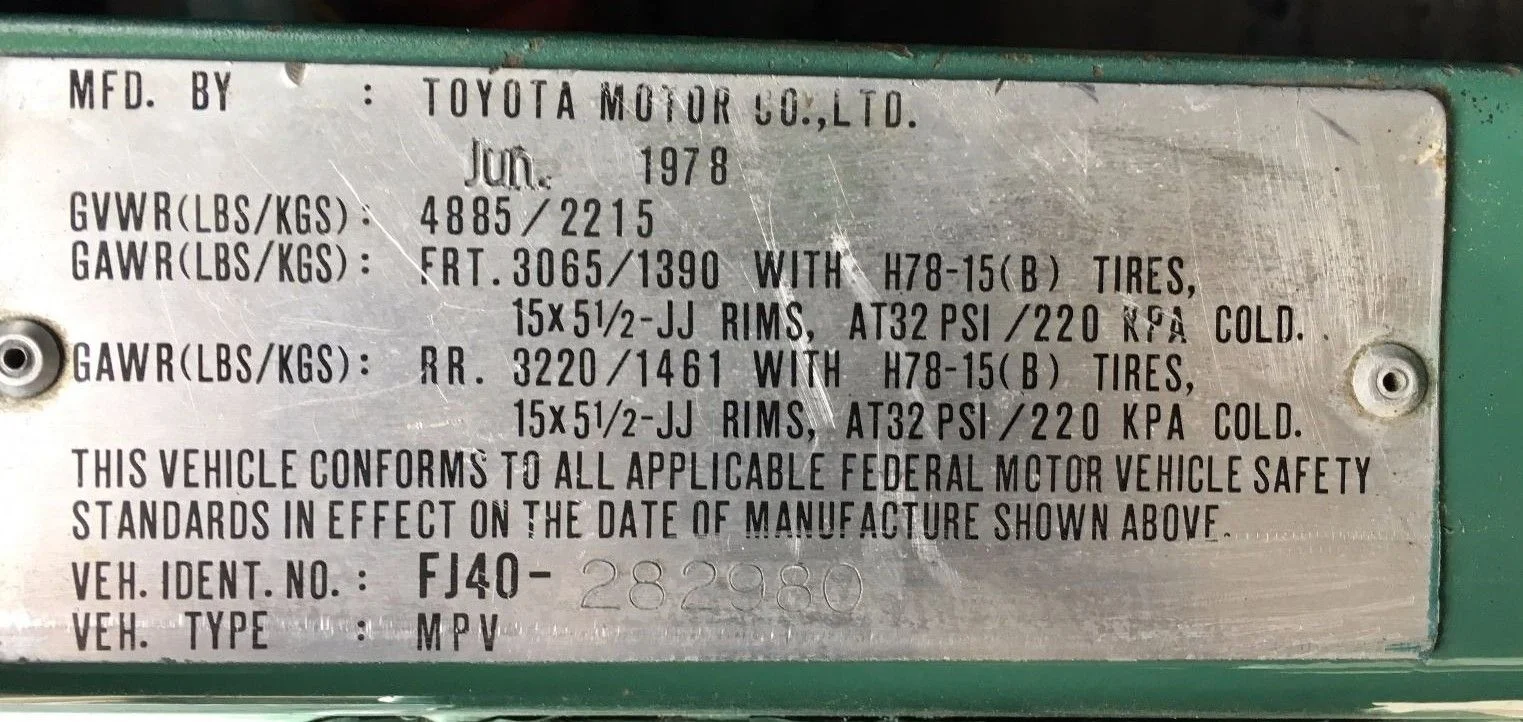
forum.ih8mud.com
I would love to see your research!! It might support my theory!!
If you notice both examples above have a VIN# that is earlier than the month that is stamped on the plate. This indicates that the 40 was complete in a previous month and then stamped "incorrectly" in a later month. This seems to be the case in most of the situations I have seen.
Hence, my theory suggests that the VIN plate was attached on the assembly line, with the month stamp probably applied either towards the end of the line or shortly after the FJ40 units were taken off the line during final inspection and/or readied for shipping. At times, a unit might have been finished on the line but held back for various reasons before moving on to the final inspection and preparation for shipping.
There are several plausible reasons why a FJ40 might have been held back on the assembly line or pulled during the process:
1. Waiting for Optional Equipment: The vehicle could have been completed and then held back or set aside to receive optional equipment such as an AM radio, snow tires, mud flaps, or locking hubs before being cleared for shipping.
2. Quality Control Issue: If there was a quality control concern, such as an incorrect installation that needed rectification, the FJ40 might have been pulled off the line waiting for necessary adjustments.
3. Damage or Cosmetic Defect: In the case of damage or a cosmetic defect observed during production, the unit could have been pulled or held back for repairs or refinishing.
It is plausible that a Toyota Land Cruiser FJ40 could have been retained in the factory for a month or longer while waiting for resolution of one or more of these issues. At the end of this period, the current month stamp, not consistant with the VIN# and actual date of completion, would have been applied as part of the final inspection and preparations for shipment once the concerns were addressed and the vehicle was ready to be dispatched. Therefore resulting in a VIN# that suggests a December or January completation date but a "March" stamp that represents the date of final inspection.
Through my research, I've discovered that this practice was somewhat common, particularly during the manufacturing processes of the 1960s, 70s, and 80s. Back then, record-keeping standards were not as stringent as they are today. Toyota had a reputation for depleting existing parts inventory before transitioning to newer components. In my observations of original FJ40s and FJ55s, I found some assembled in times of transition contained a mix of parts that didn't align with their designated production dates. Enthusiasts sometimes refer to this anomaly in options as "mid-year" transition vehicle, which could be a blend of older and newer components, creating a unique amalgamation of parts.
This is just my theory... It would be helpful to examine additional examples of inconsistent or abnormal stampings to further support this theory.





